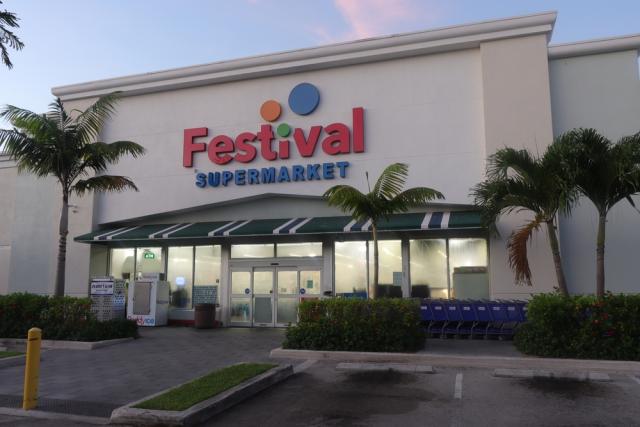Grocers catering to Hispanic shoppers need to pay attention to their supporting population mix to identify a successful store location, as well as what products to stock.
By Claire Davies and Alison Schilling
Source: progressivegrocer.com, August 2023
Demographic growth, changing tastes are driving consumer shopping behavior
As the Hispanic population in the United States continues to grow – expected to exceed 74 million in 2028, almost 22% of the total population – so does its buying power. In fact, the real consumption of the Hispanic population – the amount spent after accounting for price inflation – grew more than three times faster from 2010 to 2020 than the non-Hispanic population in the United States. This has major implications for Hispanic-focused brands and grocery retailers.
Additionally, the popularity of Hispanic food is continuing to rise among non-Hispanic Americans. A Datassential survey found that 45% of Gen Z consumers would choose Mexican if they could only eat one more cuisine for the rest of their lives.
[Read more: “Making the Most of Multicultural Marketing“]
This is driving changes in consumer shopping behavior, and players in the grocery space are already reacting. For example, conventional grocers are stocking more and more Hispanic brands as they look to widen their appeal. Additionally, some Hispanic brands are trying to move away from the ethnic food aisle into more mainstream grocery aisles. We’re also seeing large Hispanic grocers – which have historically featured different layouts from conventional grocers, with prominence skewed toward products in a typical Hispanic grocery basket, such as fresh meat from the meat counter and shelf staples like beans, rice, tortillas and spices – change their models to appeal to more non-Hispanic shoppers.
Opportunities abound for grocery retailers and food and beverage brands – and their investors – but they should keep some key factors in mind as they develop a strategy.
Who Are Hispanic Shoppers?
For retailers and brands alike, it’s critical to look beyond top-line Hispanic population figures when targeting Hispanic consumers and designing products and shelf assortments. To truly – and successfully – service this demographic, country of origin matters. “Hispanic” refers to Spanish-speaking people who have descended from a Spanish-speaking population – it’s a large group with a diverse range of cultural backgrounds and norms. The Southeast Hispanic population is mostly people from Cuba or the Caribbean, while the Southwest is heavily Mexican. Cuban cuisine, for example, favors fruits, root vegetables and citrus marinades, while Mexican cuisine focuses on spices.
Retailers and brands would also be well served to recognize that Hispanic populations are highly concentrated in certain areas of the country. For brands, that means retailer targeting and distribution strategy must be a geographically focused exercise – for example, targeting places like California and Texas, where more than 40% of all U.S. Hispanic grocery stores are located. Grocers also need to pay attention to their supporting population mix to identify a successful store location, as well as what products to stock.
Purchasing behavior of the Hispanic consumer revolves around multigenerational family dynamics – and they favor foods that are authentic to their native culture. This means younger generations are more familiar with the brands their parents and grandparents use to cook, especially since grocery shopping is often seen as a special family activity. As such, brands should focus on highlighting unique customs and heritages, with colloquial marketing language.
While shopping across a greater variety of grocery stores as compared to other ethnicities, Hispanic consumers also prefer to shop for more traditional items and authentic brands at Hispanic groceries, rather than conventional stores. This makes it important for authentic Hispanic brands to primarily target and gain distribution in Hispanic grocers. For Hispanic food brands, there’s a long runway for growth that may be difficult to unlock given the high level of fragmentation in the Hispanic grocery space. It will be wise for some brands to sign on with distributors that specialize in Hispanic markets and scale with larger Hispanic grocery chains.
Investments in Growth
Indeed, the Hispanic grocery space is even more fragmented than conventional grocery, although some consolidation is happening. Examples can be seen in deal activity: The parent group of Cardenas acquired El Rancho Supermercado in June 2023 and El Super/Bodega Latina acquired the chain Fiesta Mart in 2018. In addition, consolidation is happening through new site growth within chains. Hispanic chains are opening in places vacated by conventional grocers, like Vons and Ralphs, and conventional chains have also been launching Hispanic chains – Southeastern Grocers started Fresco y Más in 2016 in Florida and grew it to 23 locations within the first 18 months.
This activity on the grocery side shows that retailers are investing in the growth of this consumer group. Not to be left out, investors are also looking to capitalize on the opportunity, too, as seen by private equity firm Apollo’s 2022 acquisition of Cardenas Markets and Mi Pueblo from KKR.
Altogether, the growth among the Hispanic consumer and the changing American palate is providing vast growth opportunities for Hispanic food brands, retailers and potential investors.

